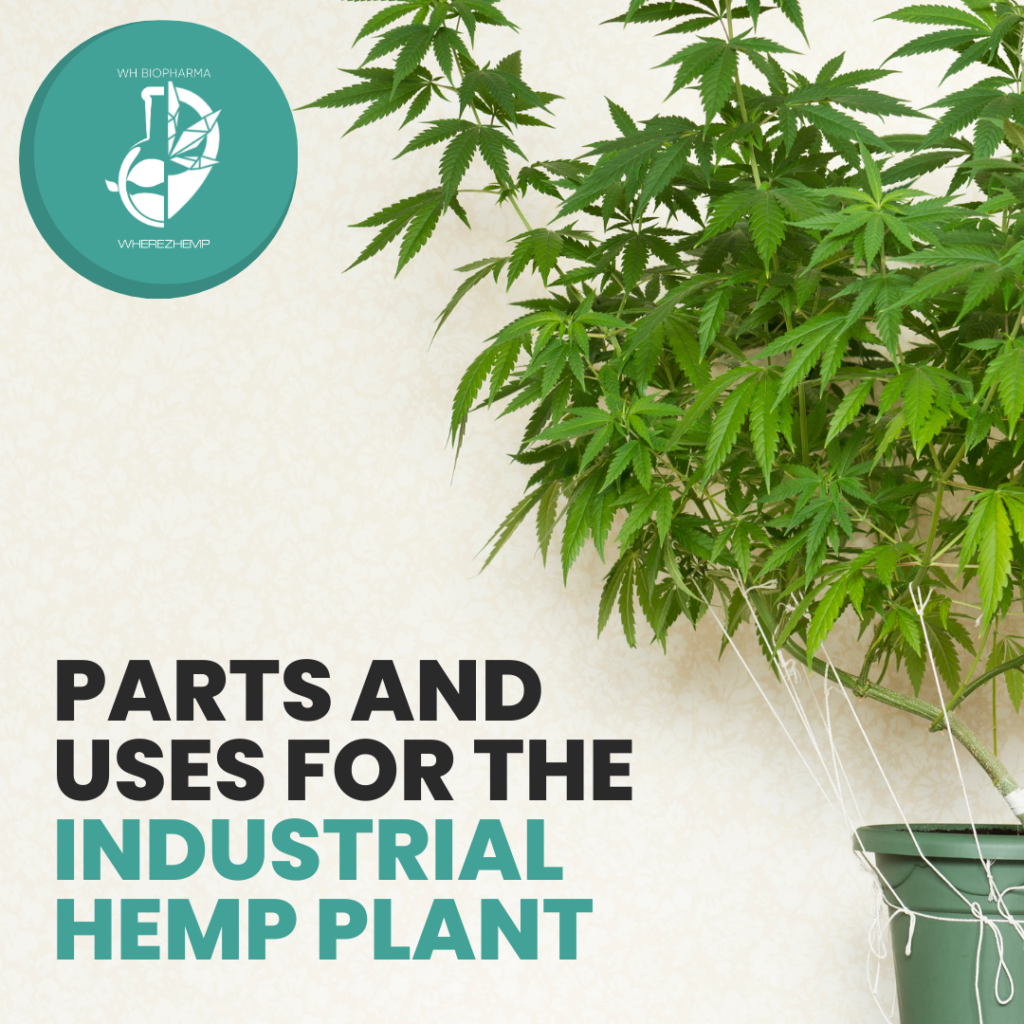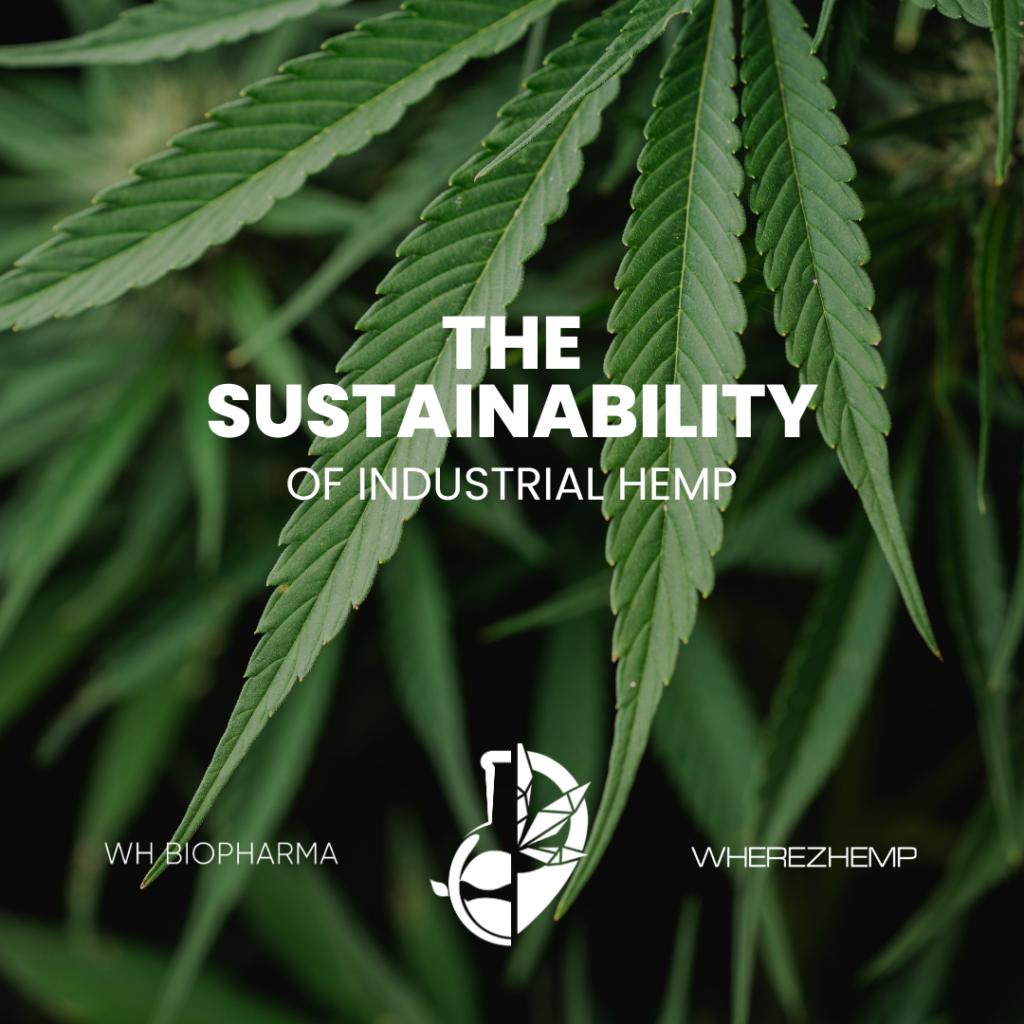Industrial hemp, also known as Cannabis Sativa, is an incredibly versatile and hardy resource that has been used for a variety of products for thousands of years. Hemp is a renewable raw material that has been grown and used since the earliest days of human history, and its cultivation can be a win-win for both the economy and the environment.
A Renewable Resource
Hemp is a renewable resource that grows quickly, making it an ideal crop for sustainable agriculture. This plant can grow in a wide range of soil types and climates, and it requires fewer pesticides and fertilizers than other crops such as cotton, soybeans, and corn. Additionally, it is a low water-use crop, making it an excellent choice for arid regions.
Industrial Hemp Market
Hemp-derived cellulose is one of the most important products derived from hemp plants. This material is used to make a wide range of products, including paper, textiles, and biodegradable plastics. Hemp paper, for example, is stronger and more durable than traditional paper made from trees, and it can be recycled more times. The hemp industry has been growing steadily in recent years, with sales of hemp products increasing annually. In 2018, the United States industrial hemp market was estimated to be worth $820 million, and this figure is expected to rise in the near future.
A Dominant Crop
Hemp was initially viewed as a dominant crop in the United States, with farmers required by law to grow it in certain areas in the 17th and 18th centuries. However, the Marihuana Tax Act of 1937 included hemp as a restricted substance, and this effectively ended the cultivation of hemp in the United States for years to come. It was only recently that the law changed and farmers were allowed to start growing industrial hemp again. The growing hemp industry is an excellent example of how changes in policy can drive economic growth and create jobs.
Hemp Industries Association
The Hemp Industries Association (HIA) is a trade association that advocates on behalf of the hemp industry. The HIA played a significant role in the changes to the law that allowed hemp to be grown again in the United States. The association works to promote the use of hemp in a variety of industries and to educate the public about the benefits of this versatile resource.
Environmental Benefits
Growing industrial hemp offers a wide range of environmental benefits. For one thing, it can provide farmers with an alternative to monoculture farming practices that can lead to soil degradation and other environmental harms. Additionally, hemp plants absorb large amounts of carbon dioxide from the atmosphere, making them an essential tool in efforts to mitigate the effects of climate change.
Industrial hemp is a win-win for both the economy and the environment. This versatile plant can be used to make a wide range of products, from textiles to building materials, and it is a renewable resource that requires minimal inputs to grow. As the industrial hemp market continues to grow in the coming years, we can expect to see more farmers embrace this crop and more entrepreneurs using industrial hemp to innovate new products. Ultimately, industrial hemp is an excellent example of how we can create a sustainable economy while working to protect our natural resources.
Parts and Uses for the Industrial Hemp Plant

Cannabis Sativa is a sustainable crop that has a variety of uses components, which makes it a win-win for the economy and the environment. Here are some parts and uses of the industrial hemp plant:
Hemp Seed
Hemp seeds are a byproduct of hemp production, which is used to produce many health foods. The raw hemp seeds, which contain healthy fats and protein, are a nutritional food that can be added to meals such as salads, smoothies, and baked goods.
Hemp Fibers
Hemp has been used for thousands of years as an agricultural fiber. The fibers are extracted from the bark of the hemp plant and used in a wide range of products, including clothing, ropes, and paper. In neolithic age China, hemp fibers were used to create garments that were worn by people in burial tombs.
Hemp Flowers
Hemp flowers are the most versatile part of the hemp plant and the primary source of the non-psychoactive compound, cannabidiol (CBD). Hemp flowers can be used to create CBD oils and other CBD products, which are currently in high demand.
Construction Materials
Hemp has been used to create construction materials such as hempcrete, which is a sustainable alternative to traditional concrete. Hemp wood is also an eco-friendly alternative to wood products as it is durable, flexible, and can be fire-resistant.
Hemp Paper
Hemp paper is a sustainable alternative to wood pulp paper. Hemp-derived cellulose can be used to make paper, which is stronger and more durable than traditional paper made from trees. It can also be recycled more times.
Plastic Composites
Hemp fibers can be combined with other materials like plastic composites to create strong and durable products. Hemp plastic is eco-friendly, biodegradable, and can replace other plastic products that harm the environment.
Hemp-Derived Cellulose
Hemp-derived cellulose is a renewable raw material that is used to create products like biofuels, textiles, and plastics. It can also be used to manufacture ethanol, which is used in a wide range of industrial applications.
The industrial hemp market was once dictated by the Marihuana Tax Act, which discouraged farmers from growing industrial hemp. However, this has now changed, allowing farmers to grow hemp again. As a result, the hemp industry is experiencing a revival, where more entrepreneurs are using hemp to innovate new products that are environmentally friendly. The Hemp Industries Association plays a crucial role in promoting the use of hemp in a variety of farmers in the united of industries and educating the public about the benefits of this sustainable crop.
Industrial hemp is a renewable, hardy, and versatile crop that can bring many benefits to the economy and the environment. From its fibers and flowers to its seeds and cellulose, the many parts of this plant offer opportunities for states to grow hemp and create sustainable products in a variety of industries. As more farmers continue to grow industrial hemp and entrepreneurs innovate new hemp products, the potential for this crop is limitless.
The Sustainability of Industrial Hemp
Industrial hemp, also known as Cannabis Sativa L., is a plant that has been used for thousands of years for a variety of purposes. It is a sustainable crop that requires minimal inputs, making it an eco-friendly choice for farmers and businesses. Here are some reasons why industrial hemp is an excellent example of sustainable agriculture:

Low Environmental Impact
Industrial hemp is a low-impact crop that requires fewer pesticides and fertilizers than other crops like cotton or corn. It is also a drought-tolerant crop that requires less water to grow. In addition, the plant’s deep roots help to prevent soil erosion, which keeps soil healthy and fertile over time.
Multiple Uses
The versatility of industrial hemp makes it a sustainable crop. Every part of the plant, from the stalk and leaves to the flowers and seeds, can be used to make a wide range of products, including textiles, paper, construction materials, and biofuels. This diversity of uses means that the resources invested in growing the crop are maximized, making it a more sustainable choice.
Carbon Sequestration
Hemp is an effective tool for carbon sequestration. As the plants grow, they absorb carbon dioxide from the atmosphere, which helps to mitigate the effects of climate change. According to research, hemp is capable of sequestering up to 15 tonnes of carbon dioxide per hectare of land, making it a valuable crop in efforts to reduce greenhouse gas emissions.
Renewable Raw Material
Industrial hemp is a renewable raw material that can be grown year after year. Unlike non-renewable resources like oil, the production of industrial hemp does not contribute to the depletion of finite resources. Instead, it supports sustainable agriculture practices and promotes the use of renewable resources.
Biodiversity
The cultivation of industrial hemp promotes biodiversity. This is because the crop can be used as part of crop rotation practices, which help to prevent soil degradation and improve soil health. Additionally, the hemp plant provides habitat and food for many species, including birds and insects, which helps to support healthy ecosystems.
Industrial hemp is a sustainable crop that has the potential to provide numerous environmental and economic benefits. Its low environmental impact, multiple uses, carbon sequestration, renewable nature, and promotion of biodiversity make it an excellent example of sustainable agriculture. As more farmers and entrepreneurs embrace industrial hemp, we can expect to see its positive impact on the environment and the economy continue to grow.
Hemp Products: Sustainable and Versatile
Industrial hemp, also known as Cannabis Sativa L., is a versatile crop that can produce a wide range of products. Here are some popular hemp products that are sustainable and eco-friendly:
Textiles
Hemp fibers are naturally durable, breathable, and absorbent, making them an excellent choice for textile production. Hemp textiles can be used to create products like clothing, bags, and even shoes. Hemp fabrics are also biodegradable, which means they can decompose after disposal.
Paper
Paper made from hemp fibers is a sustainable alternative to traditional paper made from trees. Not only does hemp paper require fewer chemicals and less water to produce, but it is also more durable and can be recycled more times than traditional paper.
Food
Hemp seeds are a superfood that is rich in protein, healthy fats, and minerals like magnesium and iron. They can be consumed raw, roasted, or as an ingredient in recipes like smoothies, salads, granola bars, and more.
Personal Care Products
Hemp seed oil is a fantastic ingredient for personal care products due to its high levels of essential fatty acids, which help to moisturize and soothe the skin. As a result, hemp seed oil is commonly used in products such as lotions, soaps, and lip balms.
Building Materials
Hempcrete is a sustainable alternative to traditional concrete. It is made from a mixture of hemp herbs, a woody inner core of the hemp plant, and lime. It is lightweight, fire-resistant, and has excellent thermal insulation properties, making it a durable and eco-friendly choice for building homes and other structures.
Plastics
Hemp plastic is a biodegradable and sustainable alternative to traditional plastic products. It is made from hemp fibers and other plant-based materials like cornstarch, making it a renewable resource. Hemp plastics can be used to produce products like packaging materials, straws, and even car parts.
Fuel
Hemp can be used to produce biofuels like ethanol, which is a sustainable alternative to gasoline. It can also be used as a feedstock for biodiesel production. Additionally, it is an excellent substrate for producing biogas from anaerobic digestion.
Hemp is a versatile and sustainable crop that can produce a wide range of products. Textiles, paper, food, personal and organic body care products, building materials, plastics, and fuel are just some examples of what can be made from hemp. As the hemp industry continues to grow, we can expect to see more innovation and more sustainable products made from this incredible plant.





